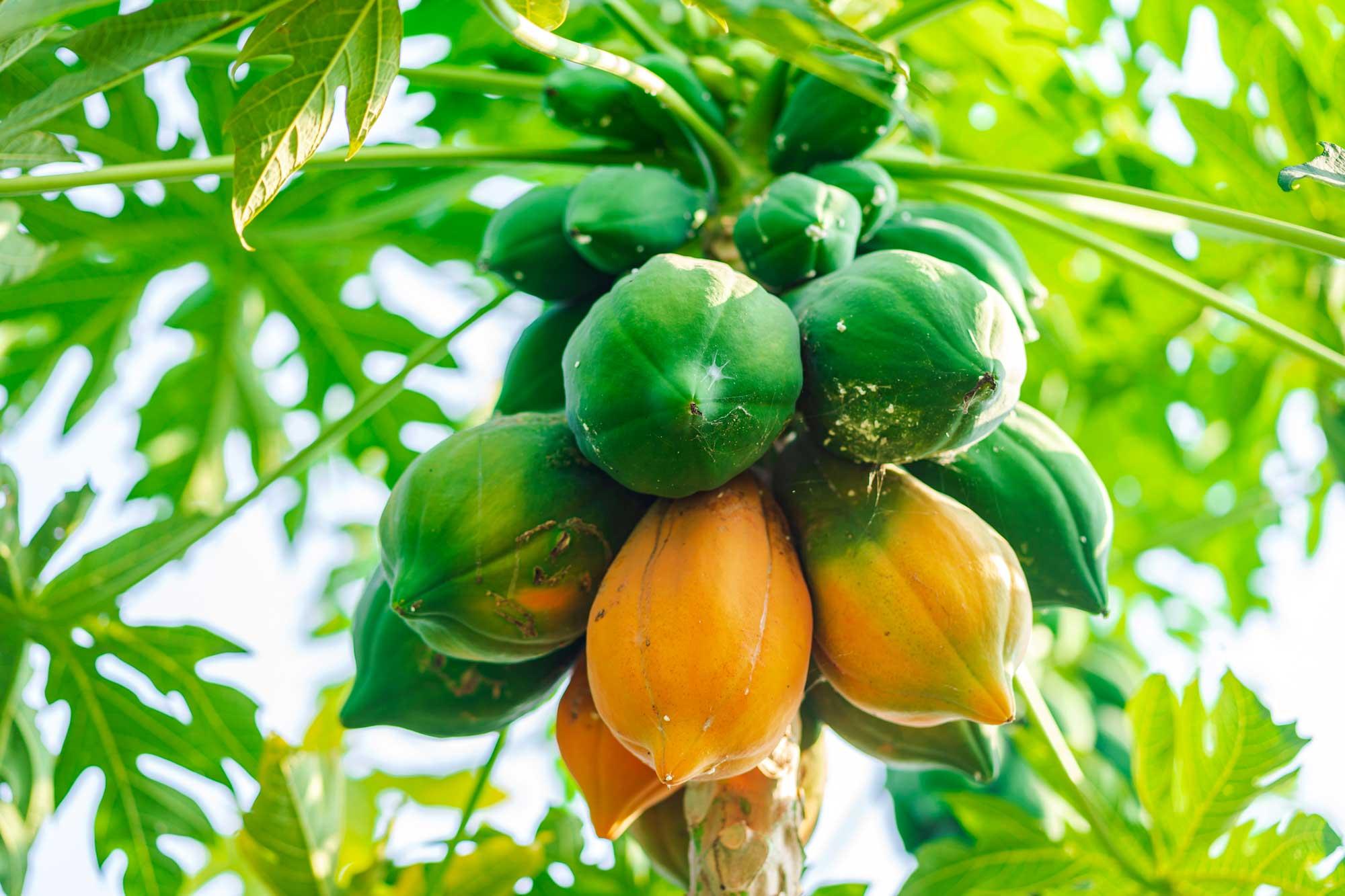The papaya is a small, sparsely branched tree, usually with a single stem growing from 5 to 10 m (16 to 33 ft) tall, with spirally arranged leaves confined to the top of the trunk. The lower trunk is conspicuously scarred where leaves and fruit were borne. The leaves are large, 50–70 cm (20–28 in) in diameter, deeply palmately lobed, with seven lobes. All plant parts contain latex in articulated laticifers.
Papaya is one of the most nutritious and medicinally important fruits of the tropical region. It owes its popularity to various simple reasons like, it requires less area per tree, comes to fruiting in a year, is easy to cultivate, and provides per acre income. At a time, a tree can yield 100 fruits, each weighing about 1 to 2.5 kg and fruits are rich in vitamins A and C, which are essential for good health.
The site selected for planting the seedlings should be well prepared through repeated ploughing and harrowing and finally leveled pits of 1.5 ft x 1.5 ft x 1.5 ft are dug at 7 ft x 8 ft or 8ft x 8 ft distance. Drench pits with Chirayu (Bacillus subtilis and Trichoderma harzianum) 2g/liter at least 3 to 5 liter per pit and fill with 1 kg Bio organic Manure (Multiplex Annapurna or Mangala Biogold plus or MBF Brown Gold or JK Compost), 50g bio- activator mixture (Multiplex Navajeevan-G), 500g Rock Phosphate per pit before planting along with loose topsoil. Planting of the saplings in the main field may be done during monsoon. The plants are removed from the nursery/covered with a ball of earth and placed at the center of the dug pit and covered with soil up to the surface of the ball of earth. Light irrigation should be given immediately after planting.

